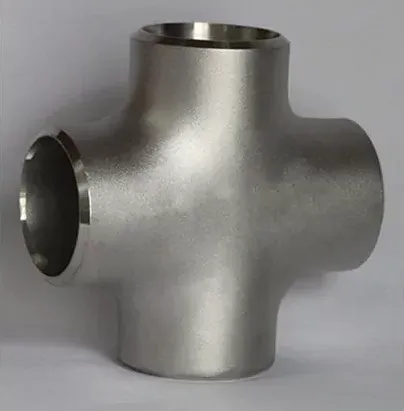-
Cangzhou Yulong Steel Co., Ltd.
-
Phone:
+86 13303177267 -
Email:
admin@ylsteelfittings.com
- English
- Arabic
- Italian
- Spanish
- Portuguese
- German
- kazakh
- Persian
- Greek
- French
- Russian
- Polish
- Thai
- Indonesian
- Vietnamese
- Zulu
- Korean
- Uzbek
- Hindi
- Serbian
- Malay
- Ukrainian
- Gujarati
- Haitian Creole
- hausa
- hawaiian
- Hebrew
- Miao
- Hungarian
- Icelandic
- igbo
- irish
- Japanese
- Javanese
- Kannada
- Khmer
- Rwandese
- Afrikaans
- Albanian
- Amharic
- Armenian
- Azerbaijani
- Basque
- Belarusian
- Bengali
- Bosnian
- Bulgarian
- Catalan
- Cebuano
- China
- China (Taiwan)
- Corsican
- Croatian
- Czech
- Danish
- Esperanto
- Estonian
- Finnish
- Frisian
- Galician
- Georgian
- Kurdish
- Kyrgyz
- Lao
- Latin
- Latvian
- Lithuanian
- Luxembourgish
- Macedonian
- Malgashi
- Malayalam
- Maltese
- Maori
- Marathi
- Mongolian
- Myanmar
- Nepali
- Norwegian
- Norwegian
- Occitan
- Pashto
- Dutch
- Punjabi
- Romanian
- Samoan
- Scottish Gaelic
- Sesotho
- Shona
- Sindhi
- Sinhala
- Slovak
- Slovenian
- Somali
- Sundanese
- Swahili
- Swedish
- Tagalog
- Tajik
- Tamil
- Tatar
- Telugu
- Turkish
- Turkmen
- Urdu
- Uighur
- Welsh
- Bantu
- Yiddish
- Yoruba

Dec . 01, 2024 21:31 Back to list
Understanding the Function and Applications of Flange Valves in Industrial Systems
Understanding Flange Valves A Comprehensive Overview
Flange valves are essential components in various industrial applications, serving as crucial connectors and control mechanisms in piping systems. These valves are designed to control the flow of liquids and gases, and their unique flange design allows for easy installation and maintenance. In this article, we will delve into the characteristics, types, applications, and benefits of flange valves.
Characteristics of Flange Valves
Flange valves are distinguished by their flange fittings, which are protruding edges that serve as a means to connect the valve to the piping system. These flanges come in various shapes and sizes, accommodating different types of pipes and installation requirements. The flanges can be welded, bolted, or clamped to the pipe, providing a secure and leak-proof connection.
The construction material of flange valves varies significantly depending on the application requirements. Common materials include stainless steel, ductile iron, carbon steel, and plastic. The choice of material is essential as it affects the valve's resistance to corrosion, temperature fluctuations, and pressure changes.
Types of Flange Valves
Flange valves can be categorized into several types based on their design and operation
1. Gate Valves Ideal for on/off flow control, gate valves enable minimal pressure drop when fully open.
2. Globe Valves Designed for regulating flow, globe valves offer greater control but typically feature a higher pressure drop compared to gate valves.
3. Ball Valves Known for their quick operation, ball valves utilize a spherical disc to control flow, making them highly effective for shut-off purposes.
4. Butterfly Valves These valves are employed for throttling and flow control, utilizing a rotating disc to manage the flow rate.
flange valve

5. Check Valves Also known as non-return valves, check valves allow fluid to flow in one direction while preventing backflow.
Applications of Flange Valves
Flange valves find application across diverse industries, including oil and gas, water treatment, chemical processing, HVAC systems, and food and beverage manufacturing. They are frequently used in pipelines that transport various fluids, where reliable and safe flow management is essential.
In oil and gas applications, flange valves are critical in controlling the flow of crude oil, natural gas, and other hydrocarbons. In water treatment facilities, they help regulate water flow among treatment processes. Additionally, chemical plants utilize flange valves to manage corrosive and hazardous materials safely.
Benefits of Flange Valves
The advantages of using flange valves extend beyond their functional capabilities. Firstly, their design ensures ease of installation and maintenance, reducing downtime during repairs. With standardized flange dimensions, these valves can be easily integrated into existing systems, minimizing the need for modifications.
Secondly, flange valves offer robust sealing performance, reducing the likelihood of leaks, which is particularly crucial in industries handling hazardous fluids. The ability to select appropriate materials further enhances their reliability in various environmental conditions.
Lastly, flange valves provide versatility in operation, with multiple types available to suit specific application needs. This adaptability allows engineers to choose the right valve type based on flow control requirements, helping in optimizing system performance.
Conclusion
Flange valves are pivotal components in modern piping systems, offering numerous benefits that enhance operational efficiency and safety. Their wide range of applications across various industries underscores their importance in ensuring the reliable flow of liquids and gases. Understanding the characteristics and types of flange valves allows industry professionals to make informed decisions, ultimately contributing to the success of their projects and processes.
Latest news
-
ANSI 150P SS304 SO FLANGE
NewsFeb.14,2025
-
ASTM A333GR6 STEEL PIPE
NewsJan.20,2025
-
ANSI B16.5 WELDING NECK FLANGE
NewsJan.15,2026
-
ANSI B16.5 SLIP-ON FLANGE
NewsApr.19,2024
-
DIN86044 PLATE FLANGE
NewsApr.19,2024
-
DIN2527 BLIND FLANGE
NewsApr.12,2024
-
JIS B2311 Butt-Welding Fittings LR/SR 45°/90° /180°Seamless/Weld
NewsApr.23,2024
-
DIN2605-2617 Butt-Welding Fittings LR/SR 45°/90°/180° Seamless/Weld
NewsApr.23,2024











